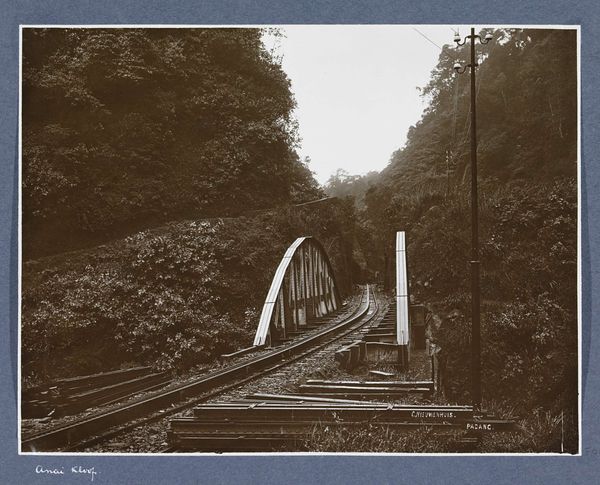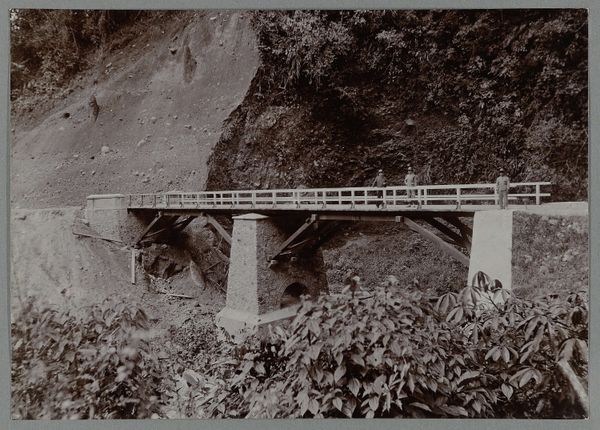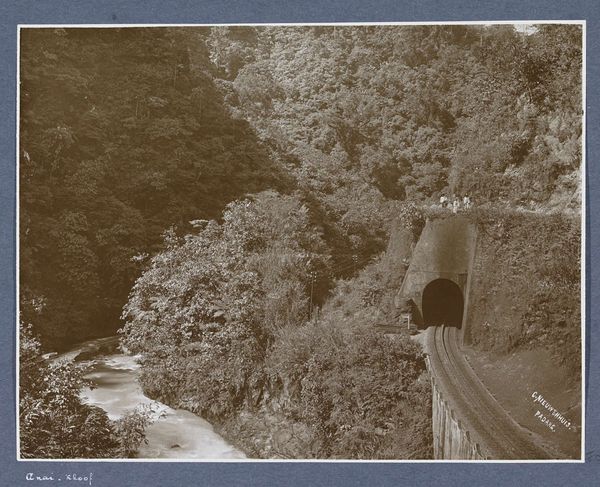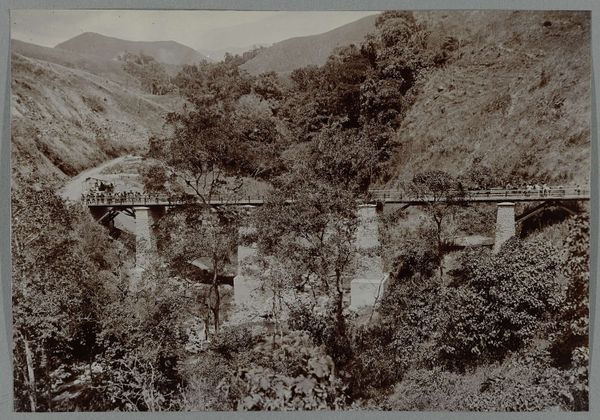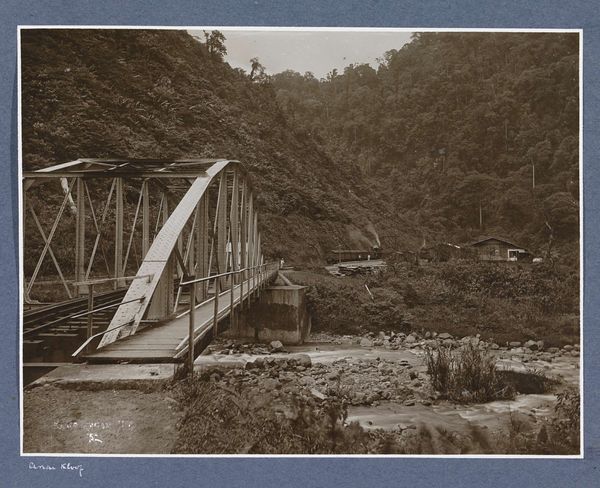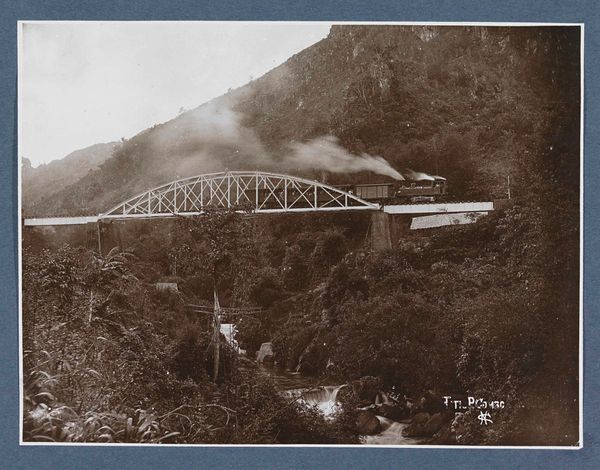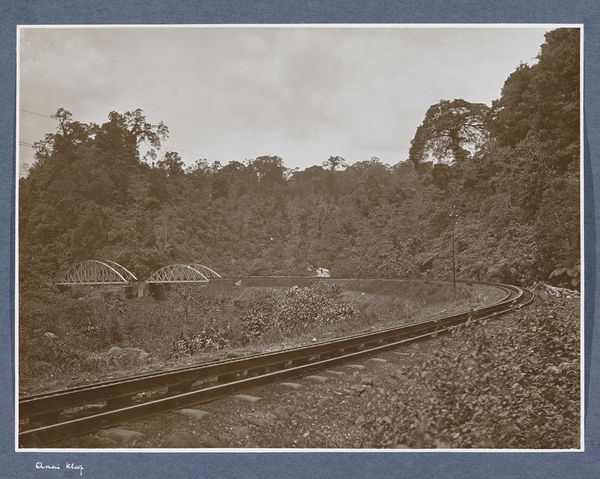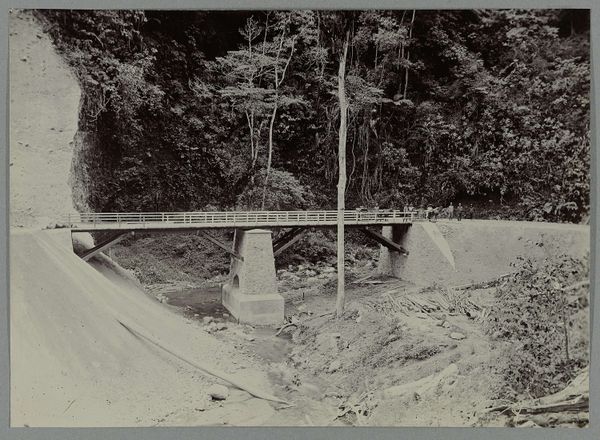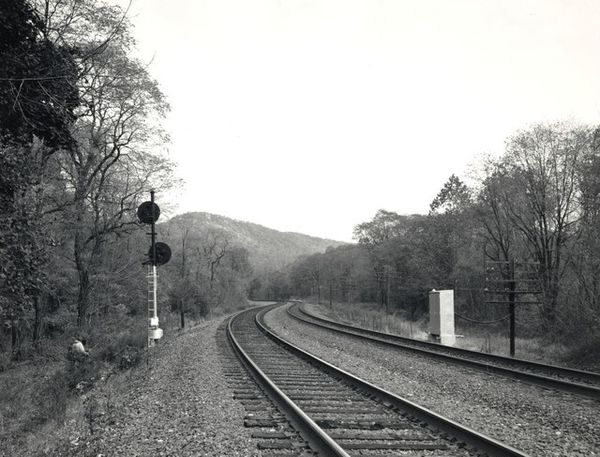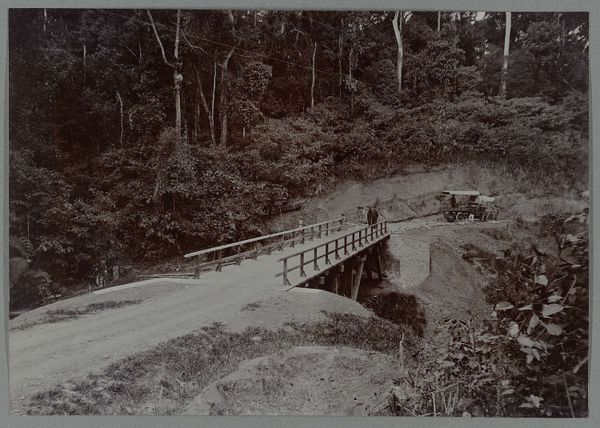
Spoorbrug met tandradspoorbaan in de Anaikloof op Sumatra c. 1900 - 1920
0:00
0:00
christiaanbenjaminnieuwenhuis
Rijksmuseum
photography
#
landscape
#
photography
#
orientalism
#
realism
Dimensions: height 221 mm, width 288 mm
Copyright: Rijks Museum: Open Domain
Curator: Immediately, I'm struck by how this image encapsulates a moment of industrial intrusion into a wild, almost prehistoric landscape. Editor: And it's precisely that juxtaposition that holds my attention. This photograph, dating from around 1900-1920, captures a 'Spoorbrug met tandradspoorbaan in de Anaikloof op Sumatra' – a railway bridge with a rack railway in the Anai Gorge on Sumatra. It's the work of Christiaan Benjamin Nieuwenhuis, preserved in the Rijksmuseum. Look at how that steel structure pierces the jungle. Curator: Pierces... yes, it's almost violent. It feels heavy, the dark metal contrasting with the light reflected on the river below and also highlighting that the rails are vanishing into an abyss. What kind of symbolic weight does the train itself carry? It must stand for progress, commerce, control. Editor: Precisely! It's a powerful symbol. Trains, particularly in colonial contexts, became these visual embodiments of progress and, inevitably, also of domination. This photograph acts like a memory, one frozen in sepia tones; a physical manifestation of 'Orientalism', yet tinged with realism. The bridge isn’t just a means of transport; it’s a statement of intent. That railway line promised the industrial extraction of resources from a distant and, until then, inaccessible region. It speaks volumes. Curator: You can almost hear the clang of metal and the hiss of steam cutting through the humid air, overpowering the natural sounds. I suppose in my view it’s an attempt to conquer something beautiful, and it looks quite dystopian to me. What do you think someone indigenous would have made of all this back then? Editor: Oh, certainly, the cultural memory embedded in these images speaks to so much more than simple admiration of engineering feats! It's about acknowledging the layered narratives within symbols: industry's rise set against environmental change, innovation shadowing social upheaval. Curator: Yes. What feels like objective observation also carries a cargo of implied meaning. Makes you wonder who and what history chooses to remember. Editor: Indeed, these old photographs offer echoes—fragments from which we reconstruct perspectives that would otherwise be lost, or silenced, in time. Thank you for sharing these words. Curator: No, thank you. It’s quite thought-provoking when one unravels what actually went into constructing images.
Comments
No comments
Be the first to comment and join the conversation on the ultimate creative platform.
